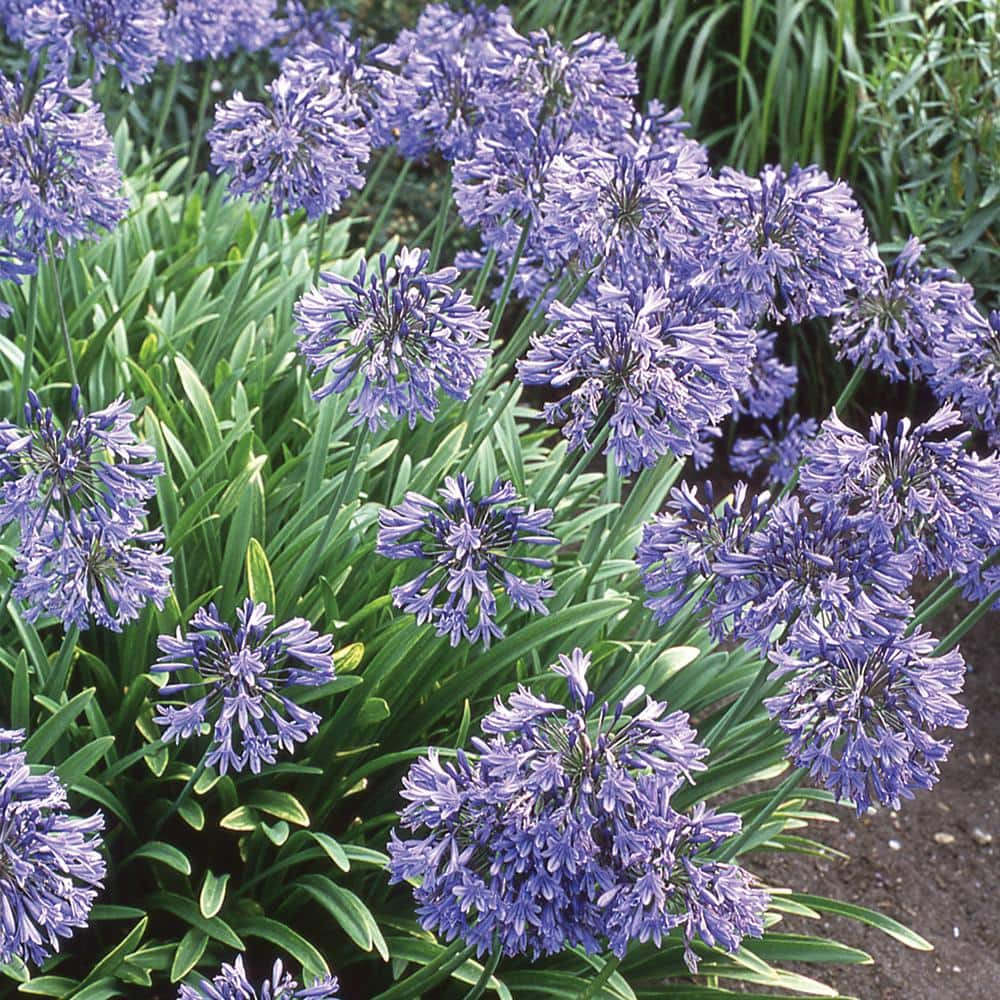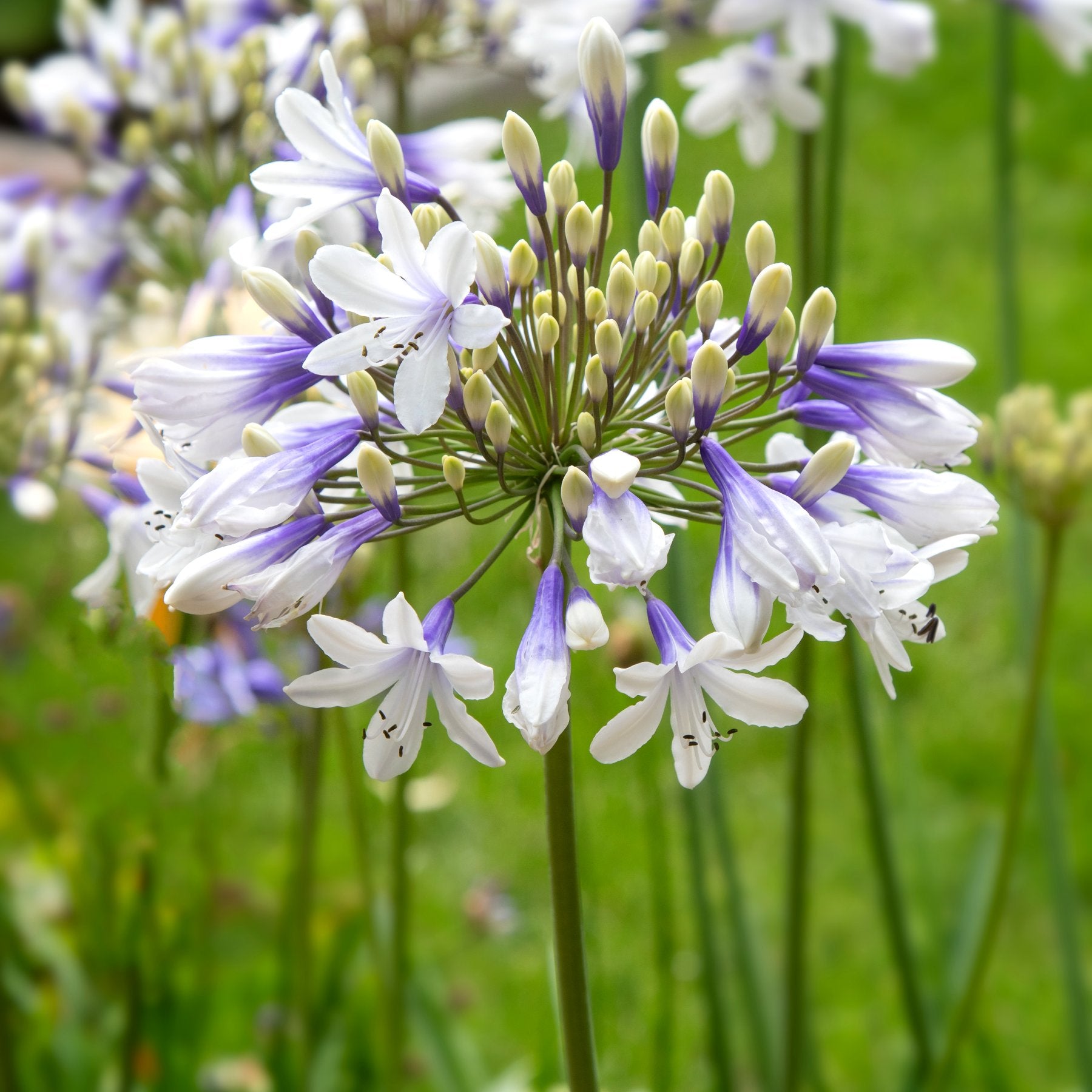Agapanthus Growing Conditions: Dirt, Sunlight, and Watering
Agapanthus Growing Conditions: Dirt, Sunlight, and Watering
Blog Article
Releasing the Secret to Effective Agapanthus Cultivation: Advice for a Flourishing Yard
In the realm of horticulture, growing agapanthus successfully calls for a strategic method that incorporates various facets of plant treatment. With mindful focus to information, one can open the keys to nurturing these stunning flowers, leading to a garden that thrives with charm and vibrancy. By understanding the subtleties of agapanthus cultivation, one can create a setting where these plants flourish and flower perfectly. In the following discussion, we will certainly check out important suggestions and tricks that will assist you in the direction of a flourishing agapanthus yard, providing understandings right into best practices, dirt problems, watering techniques, and more.
Planting Agapanthus: Finest Practices
When growing Agapanthus, correct soil prep work is important for ensuring successful development and advancement of these beautiful blossoms. Agapanthus, frequently called Lily of the Nile or African lily, flourishes in well-draining dirt with a somewhat acidic to neutral pH level - Agapanthus. Prior to growing, it is crucial to amend heavy clay dirts with raw material such as garden compost or peat moss to boost drain and offer crucial nutrients for the plants
To plant Agapanthus, select a place that receives full sunshine to partial color, as this will promote healthy and balanced development and abundant flowering. Dig an opening two times the size of the plant's origin ball and position the Agapanthus at the exact same depth it was previously expanding. Gently backfill the opening with soil, weighing down firmly to eliminate any type of air pockets around the origins.
Water the newly planted Agapanthus completely and remain to maintain the soil uniformly wet, especially during the plant's energetic growing period. Agapanthus. Applying a well balanced fertilizer once a month can further support the plant's development and flowering. By adhering to these best practices for growing Agapanthus, you can create a stunning display screen of these captivating blossoms in your yard
Suitable Dirt Conditions for Agapanthus
For ideal growth and growing success of Agapanthus plants, ensuring the soil problems are excellent is critical. Agapanthus likes soil that is rich in nutrients, so integrating a balanced fertilizer during the growing season can promote healthy development and vivid blooms.

Watering and Fertilizing Tips
To make certain healthy development and lively blossoms, proper watering and feeding strategies are essential for successful Agapanthus growing. Agapanthus plants profit from normal watering, specifically throughout the expanding period. It is recommended to water deeply as soon as a week, guaranteeing the soil is wet however not waterlogged. Throughout heat or in pots, more frequent watering may be needed to protect against the soil from drying completely.
When it pertains to feeding Agapanthus, a well balanced plant food with equivalent components nitrogen, phosphorus, and potassium can be used in the spring to promote healthy development and blooming. Slow-release plant foods are excellent for providing nutrients progressively over an extended duration. Stay clear of over-fertilizing, as this can bring about too much foliage development at the expenditure of blooms.
In addition, integrating raw material like compost into the dirt can improve nutrient levels and improve soil structure, assisting in the overall wellness of the Agapanthus plants. By complying with these watering and feeding tips, garden have a peek here enthusiasts can ensure their Agapanthus plants grow and generate spectacular displays of blossoms.
Pruning and Deadheading Techniques
Proper pruning and deadheading methods play a critical duty in maintaining the health and wellness and aesthetics of Agapanthus plants, complementing the essential techniques of watering and fertilizing for effective cultivation. Pruning Agapanthus entails getting rid of invested flower heads, yellowing or dead leaves, and total shaping of the plant to advertise better growth. Deadheading, the procedure of removing faded blossoms, not just boosts the plant's appearance but also motivates more flowering.
When deadheading Agapanthus, it is recommended to snip off the flower stem at the base utilizing sharp, clean shears. This procedure reroutes the plant's energy from seed production back into origin and vegetation growth, advertising a much healthier and extra robust plant. Normal deadheading can expand the growing use this link duration of Agapanthus and protect against self-seeding, which can lead to congestion.
In terms of trimming, Agapanthus generally benefits from a light trim after blooming to clean up the plant and encourage fresh growth. Reducing the invested blossom stems and getting rid of any kind of broken or dead foliage helps keep the plant's vitality and total appearance. Nevertheless, it is vital to avoid cutting into the crown of the plant, as this can damage its health.

Protecting Agapanthus From Pests and Diseases
Applying efficient insect and condition monitoring strategies is essential to securing the health and wellness and vitality of Agapanthus plants in cultivation. Agapanthus are typically hardy plants, however they can still come down with various insects and illness otherwise effectively taken care of. One usual insect that influences Agapanthus is the Agapanthus borer, a caterpillar that tunnels right into the plant, creating damages to the fallen leaves and blossoms. To avoid invasions, routine assessment of the plants is necessary. If borers are identified, they can be manually removed, or insecticidal soap can be utilized as a control action.
In addition to bugs, Agapanthus are vulnerable to conditions such as root rot and fungal fallen leave areas. These issues can usually be avoided by making certain proper drainage and staying clear of overwatering. Affected components of the plant should be immediately removed to stop more spread if indications of disease appear. Fungicides might additionally be made use of as a therapy step, adhering to the supplier's instructions carefully. By staying cautious and dealing with parasite and condition problems immediately, garden enthusiasts can help their Agapanthus thrive and grow.

Verdict
To conclude, successful farming of agapanthus requires appropriate growing techniques, suitable dirt conditions, sufficient watering and fertilizing, regular trimming and deadheading, and defense from conditions and pests. By adhering to these pointers and methods, gardeners can make sure a growing yard full of beautiful agapanthus blossoms. Agapanthus. Bear in mind to preserve constant care and interest to detail to advertise the wellness and longevity of these magnificent plants
When planting Agapanthus, proper soil preparation is important for ensuring check that successful development and growth of these beautiful blossoms.Water the recently grown Agapanthus completely and continue to keep the dirt equally wet, especially during the plant's active expanding season.For ideal development and blooming success of Agapanthus plants, making certain the dirt problems are perfect is critical. When planting or hair transplanting Agapanthus, ensure the dirt is well-prepared to offer the necessary foundation for the plants to develop themselves effectively. One usual pest that impacts Agapanthus is the Agapanthus borer, a caterpillar that passages into the plant, causing damage to the fallen leaves and blossoms.
Report this page